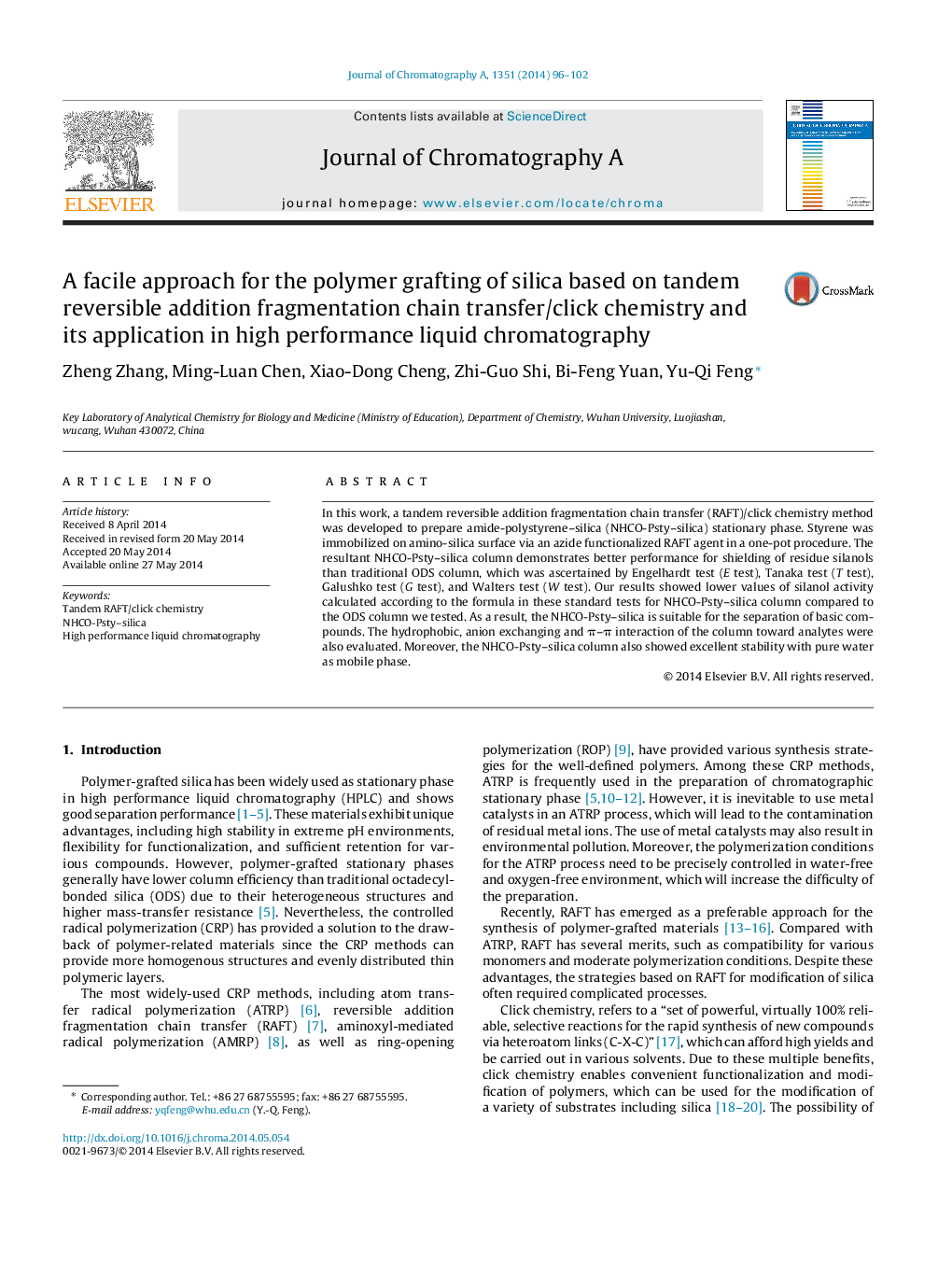| Article ID | Journal | Published Year | Pages | File Type |
|---|---|---|---|---|
| 1199821 | Journal of Chromatography A | 2014 | 7 Pages |
•A tandem RAFT/click chemistry method was developed to prepare NHCO-Psty–silica stationary phase.•The NHCO-Psty–silica column was proved to possess mixed-mode retention mechanism.•The NHCO-Psty–silica column exhibited good separation performance for various compounds.•The NHCO-Psty–silica column exhibited low exposure of residue silanols than traditional ODS column.
In this work, a tandem reversible addition fragmentation chain transfer (RAFT)/click chemistry method was developed to prepare amide-polystyrene–silica (NHCO-Psty–silica) stationary phase. Styrene was immobilized on amino-silica surface via an azide functionalized RAFT agent in a one-pot procedure. The resultant NHCO-Psty–silica column demonstrates better performance for shielding of residue silanols than traditional ODS column, which was ascertained by Engelhardt test (E test), Tanaka test (T test), Galushko test (G test), and Walters test (W test). Our results showed lower values of silanol activity calculated according to the formula in these standard tests for NHCO-Psty–silica column compared to the ODS column we tested. As a result, the NHCO-Psty–silica is suitable for the separation of basic compounds. The hydrophobic, anion exchanging and π–π interaction of the column toward analytes were also evaluated. Moreover, the NHCO-Psty–silica column also showed excellent stability with pure water as mobile phase.
